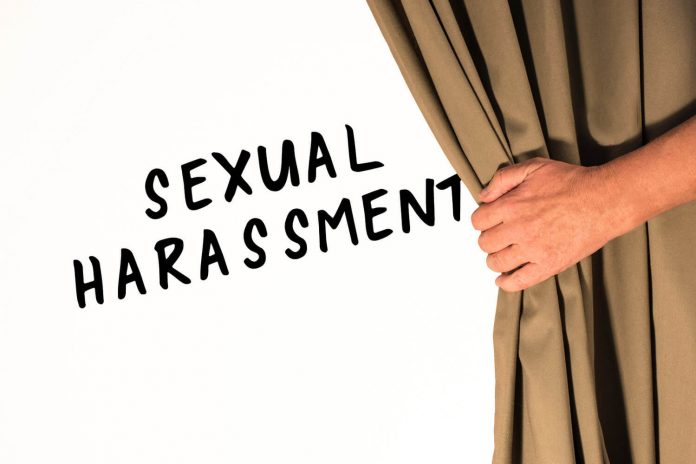This article is written by Saswata Tewari from the University of Petroleum and Energy Studies, Dehradun. This article talks about the important judgments given by the Supreme Court of India in sexual harassment cases taking place in the country.
Table of Contents
Introduction
Sexual harassment is identified as a behaviour where one gives unwelcome sexual advances, requests for sexual favors, and other such verbal or physical conducts that are highly objectionable and makes an individual feel offended and humiliated. According to Section 354A of Indian Penal Code, 1860, sexual harassment is unwelcome physical contact and advances which include unwanted and clear-cut sexual overtures, requests for sexual favors, showing explicit sexual images in a non-consensual way, and making sexual remarks which are highly objectionable.
In India, the issue of sexual harassment got recognition in the Vishaka case where the Supreme Court laid down guidelines that came out later as laws for governing sexual harassment cases in India. As time went by, appropriate steps were taken to amend the existing laws and new laws such as Sexual Harassment At Workplace (Prevention, Prohibition And Redressal) Act, 2013 were implemented to uphold the Vishaka guidelines in the country.
Vishaka & Ors vs State Of Rajasthan
In the case of Vishaka & Ors vs State Of Rajasthan, the Supreme Court of India recognized workplace sexual harassment for the first time in this landmark case, where specific guidelines were laid down and had directed the Union of India to enact a suitable law for curbing sexual harassment cases in workplaces in India.
In 1992, a Dalit woman named Bhanwari Devi who was working in the rural development program of the Government of India was gang-raped by five men because of her efforts to combat the prevalent practices of child marriages in Rajasthan. Bhanwari was unable to get justice from the police and the trial court where the matter was not taken seriously on the account that there was no medical evidence and those five men belong to the upper caste of the society and will not touch or get associated with her who is of such a lower caste.
In the end, women’s rights activists and lawyers helped her by filing public interest litigation in the Supreme Court of India under the name of Vishaka. The Supreme Court, in this case, acknowledged the legal inadequacy and recognized workplace sexual harassment as a human rights violation. While formulating the guidelines in the Vishaka case, the Supreme Court placed dependence on the Convention on Elimination of All Forms of Discrimination against Women, which was approved by the United Nations, which was signed and ratified by India. According to the judgment given in this case, sexual harassment includes:
- Unwelcomed sexually decided behavior;
- Physical advances and contacts;
- Sexual favor requests or demands;
- Sexual colored remarks;
- Any other behavior or acts that are physically unwelcome, verbally, or nonverbally conduct of sexual nature.
The Supreme Court had held that sexual harassment in the workplace is a clear breach of the fundamental rights guaranteed under Articles 14, 15, 19, and 21 of the Constitution of India. The guidelines, in this case, were laid down to prevent instances of sexual harassment of women in workplaces and these guidelines apply to all employers and institutions who are to prevent, prohibit and get redressal for sexual harassment of women at the workplace. The employers were asked to take the necessary steps to stop cases of sexual harassment. Some of these steps were:
- Expressing a clear prohibition of sexual harassment by properly notifying, publishing, and circulating such information in the workplace in suitable ways.
- Suitable working conditions should be established in workplaces relating to the respect of work, leisure, health, and hygiene to make sure that no such hostile environment towards women.
- Employees should be allowed to raise issues relating to sexual harassment at worker’s meetings and in other appropriate forums and it should be affirmatively discussed in meetings where employer and employees both are present.
- Providing a safe working environment where the female employees are safe from the individuals they come in contact with at the workplace.
- In the case where sexual harassment occurs because of the result of such an act or omission by any third party, the employer and the person-in-charge have to take all necessary actions that are justifiable to assist the victim person in terms of support and preventive action.
Also, it was directed that it is the responsibility of the employer to initiate necessary disciplinary action in the case of sexual harassment in the workplace and rules should be made which shall be considered the act of sexual harassment as misconduct in employment and the disciplinary action should be taken following such rules. A suitable complaint mechanism should be made by the employer in the organization for redressal of the complaints made by any such victims.
These complaint mechanisms should make sure that the complaints are addressed in a time-bound manner. An internet complaints committee should be made who should be dealing with every sexual harassment complaint made by a woman employee and this committee shall be headed by a woman employer only and half of the members of this committee shall be women to get a better understanding of the complaint of the victim. This committee shall also include a third party such as an NGO to prevent the possibility of any undue pressure by higher authorities on the committee.
The guidelines in the Vishaka judgment were issued under Article 32 of the Constitution of India and had the power of law and were mandatorily followed by organizations in the private and government sector.
Medha Kotwal Lele & Ors. V. Union of India & Ors.
In the case of Medha Kotwal Lele & Ors. v. Union of India & Ors., Medha Kotwa Lele, coordinator of Aalochana, a center for documentation and research on women’s rights wrote a letter highlighting several cases of sexual harassment describing that the Vishaka guidelines were not effectively implemented in the country. The letter was converted into a writ petition and was filed in the Supreme Court of India where the petitioners alleged that the guidelines that were laid down in the Vishaka case were unable to curb sexual harassment in workplaces because these guidelines were violated in both substance and spirit by the state authorities who trouble women employees using legal means in the process making women suffer by insulting their dignity.
The court was required specifically to see whether every state government had made the necessary alterations to procedure and policy as required by the Vishaka guidelines and other orders of the court. It was held that the Vishaka guidelines have to be implemented in form, substance, and spirit to help in bringing gender equality by making sure that women employees can work with dignity, decency, and due respect. Both the employer and other important officials of an organization were required by the Vishaka guidelines to observe the guidelines and to aid in preventing sexual harassment instances towards women employees.
The Court held that several states were not properly implementing the guidelines as it referred back to the findings of 2007 where it was stated that certain states and departments in India were falling short to achieve better coordination and implementation of the Vishaka guidelines. It was noted that only certain states had amended some aspects of the legislation instead of implementing all the required amendments and other states have seen to take even fewer actions.
The Supreme Court also issued the following guidelines:
- State governments should make sure that there are sufficient complaint committees made within each state to hear every single complaint that is made and also these committees should be headed by a woman.
- Appropriate mechanisms should be created by the state authorities to make sure that effective implementation of the Vishaka guidelines is taking place.
- It shall be the duty of the Bar Council of India to make sure that all the bar associations in the country and individuals registered with the State Bar Councils adhere to the Vishaka guidelines. Similarly, every other national institution should also follow the Vishaka guidelines in their workplaces.
Finally, the Supreme Court also stated that in the case of non-compliance to the Vishaka guidelines, it would be open for the aggrieved individuals to approach the High Court of the concerned state.
Mukesh & Anr. vs. State for NCT of Delhi & Ors.
In the case of Mukesh & Anr. vs. State for NCT of Delhi & Ors., it happened that on the night of 16th December 2012, a 23-year-old girl named Nirbhaya and her friend were returning from a movie theatre, when this vicious act took place. Nirbhaya was brutally raped and assaulted by six individuals and her friend had been badly beaten up by the perpetrators. She even got attacked by an iron rod because of which she had her intestines pulled apart and then later on she died.
The Supreme Court’s bench unitedly passed the death penalty to all the persons involved except for the juvenile, who was convicted and sentenced to three years in the reformation center. This incident shocked the whole of India and it ignited the fire for women’s rights and safety in the country. Several legislative reforms were made, especially in the rape laws. After the Nirbhaya case, a panel was made under the chairmanship of Justice Verma to provide for quicker trials and increased punishments and enhance criminal provisions in the law for individuals who are convicted of committing sexual offenses against women.
As per recommendations of the JS Verma Committee, the Criminal Law (Amendment) Act 2013, was enacted which in the process provided for the amendments of Indian Penal Code, 1860; Code of Criminal Procedure, 1973, Indian Evidence Act, 1872, and Protection of Children from Sexual Offences Act, 2012 with regards to the sexual offenses connected laws.
The amendment act widened the scope of the crime of rape as the offenses of stalking, acid attacks, and voyeurism were also included within the definition of rape and stated for capital punishment in rape cases which results in the death of the victim or leaving the victim in a permanent vegetative state. Threatening for rape is also considered a crime and the individual so threatening shall be punished for the same.
Seema Lepcha vs State of Sikkim and Others
In the case of Seema Lepcha vs State of Sikkim and Others, Seema Lepcha, a widow and a peon working at the central bank was sexually harassed by the Chief Manager of the Gangtok bank branch. Now as per the Vishaka guidelines there needs to be an independent committee looking after the sexual harassment cases in the organizations which were not present at the bank workplace. A writ was filed in the High Court of Sikkim concerning the absence of the independent complaint committee in the bank. The High Court directed the respondents to create a complaint committee and have the proper training for sensitization of the bank employees and to structure policies for preventing cases of sexual harassment in the workplace.
The order of the High Court was challenged in the Supreme Court where the Supreme Court gave the following guidelines:
- The State government shall provide comprehensive publicity to the notifications and orders issued by it in adherence to the Vishaka guidelines and the directions issued in the Medha Kotwal case by the Supreme Court and this should be done by publishing all the information in the newspapers having the most circulation in the state after every two months.
- Complete publicity should be given in Doordarshan about the several steps taken by the state government for enacting the guidelines laid down in the Vishaka case and the directions given by the Medha Kotwal case.
- Wide publicity should be given by the social welfare and the legal service authority of Sikkim to the notifications and orders given by the state government for both the government and private institutions.
Independent Thought vs. Union of India and Anr.
In the case of Independent Thought vs. Union of India and Anr., public interest litigation was filed in the Supreme Court of India by an NGO named Independent Thought which has been working for the welfare of child rights in the country. The petitioners challenged the constitutional validity of exception 2 to Section 375 of the Indian Penal Code 1860. The exception stated that a husband can have non-consensual sex with his wife who is in the age between 15 and 18 years. The main issue that was raised in this case whether the husband having sex with his wife where she is between 15 and 18 years of age would be identified as rape and whether the exception of Section 375 was violative of a girl child’s fundamental rights.
The Supreme Court held that sexual intercourse between a husband and a wife who’s age lies between the age of 15 and 18 years, is a criminal act in itself and considered that the exception mentioned in Section 375 is violating the fundamental rights guaranteed under Articles 14, 15 and 21 of the Indian Constitution. The exception nullifies the very purpose of Prohibition of Child Marriage Act, breaches the provisions mentioned under the Protection of Children from Sexual Offences Act (POSCO) relating to the age of consent, and international conventions to which India is a signatory.
The Supreme Court struck down exception 2 of Section 375 and has reduced the scope of the marital rape exemption in India.
Apparel Export Promotion Council v. A.K Chopra
In this case, the Supreme Court held that:
- It was unjustified of the High Court to interfere in the decisions made by the department and appellate authority. The High Court had surpassed its powers and had only the power of judicial review within its purview.
- The respondent’s actions towards the women employee were confirmed by the staff committee and that the respondent’s behaviour is extremely offensive relating to his superior possession and such objectionable behaviour of the respondent identifies as sexual harassment against the woman employee. The Supreme Court upheld the decision taken by the departmental and appellate authority in dismissing the respondent who was held guilty of sexually harassing the woman employee, from the Delhi based Apparel Export Promotion Council.
- Supreme Court widened the scope of sexual harassment by ruling that physical touch is not the sole indicator of molestation. Courts should not interpret sexual harassment in a narrow manner and should not consider physical conduct is essential for an act that may amount to an act of sexual harassment.
Conclusion
Sexual harassment is a serious problem in any country around the globe and India is trying its best to curb the cases of sexual harassment in the country. The Government of India has been taking strict actions to check the implementation of the 2013 Act in government offices. However, private offices are still endeavouring mechanisms and creating new guidelines to prohibit sexual harassment acts in their workplace. Proper mechanisms should be made by the Government to check execution in the private offices and to ensure that there is no misuse of power by the superior officers in cases of sexual harassment in the workplace.
References
- https://www.equalrightstrust.org/ertdocumentbank/Case%20Summary%20Medha%20Kotwal%20Lele%20Vs%20%20Union%20of%20India%20October%202012.pdf
- https://hrln.org/litigation/seema-lepcha-vs-state-of-sikkim-ors-2
- https://www.latestlaws.com/case-analysis/sc-case-analysis-on-marital-rape-independent-thought-v-union-of-india-and-another-by-akanksha-yadav/
LawSikho has created a telegram group for exchanging legal knowledge, referrals and various opportunities. You can click on this link and join:
 Serato DJ Crack 2025Serato DJ PRO Crack
Serato DJ Crack 2025Serato DJ PRO Crack











 Allow notifications
Allow notifications



